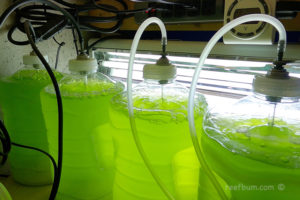
How To Grow Live Phyto – Step by Step Guide
In this article I want to go over how to setup a do-it-yourself phytoplankton culture to provide food for corals in a reef tank.

In this article I want to go over how to setup a do-it-yourself phytoplankton culture to provide food for corals in a reef tank.

The overnight shipping industry has become less reliable, which is a problem when shipping live corals. Here are some thoughts on how to overcome these issues.

I recently started using Captiv8 Aquaculture salt and I wanted to provide my initial thoughts and observations on what I have been seeing with my tanks.

The Washington DC Area Marine Aquarist Society (WAMAS) announced it has donated $20,000 USD to the Great Barrier Reef Legacy Living Coral Biobank Project

Taste in corals can be very subjective but there are certain corals that generate a lot of buzz. Here is my list of the top 10 must have SPS corals.

Does it make sense to tear down a thriving reef tank? On the surface it would seem to be a foolish move but a tank with too much coral growth can spell trouble.

One option to reduce phosphate in a reef tank is to use Lanthanum chloride. Reef keepers have had success using it but it does come with a lot of risk.

It is very important to prevent phosphate from accumulating in a reef tank since high levels will stress out corals and feed the growth of unwanted algae.

What is the best method for supplementing calcium and alkalinity to have healthy and happy SPS? A calcium reactor or two part dosing?

Years ago I tried to start a reef tank with dry rock and had a terrible experience. Time to try again with CaribSea Life Rock for my 187 gallon tank reboot.

Potassium chloride (KCL) is a great dip for AEFW. It is not hazardous to humans like the Bayer dip and it is a clear solution, allowing you to see AEFW.

Bacteria dosing these days is not limited to new reef tanks. Many reef keepers dose bacteria to established tanks. Is this necessary?